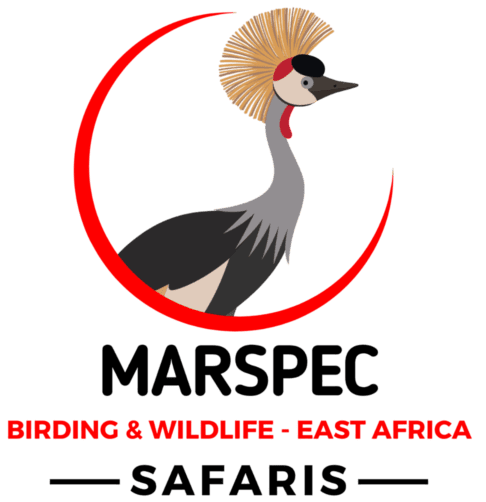16 Days Tanzania Birding Tour
This unforgettable adventure takes you top birdwatching hotspots in Tanzania, with a focus on rare, endemic, and hard-to-find birds.
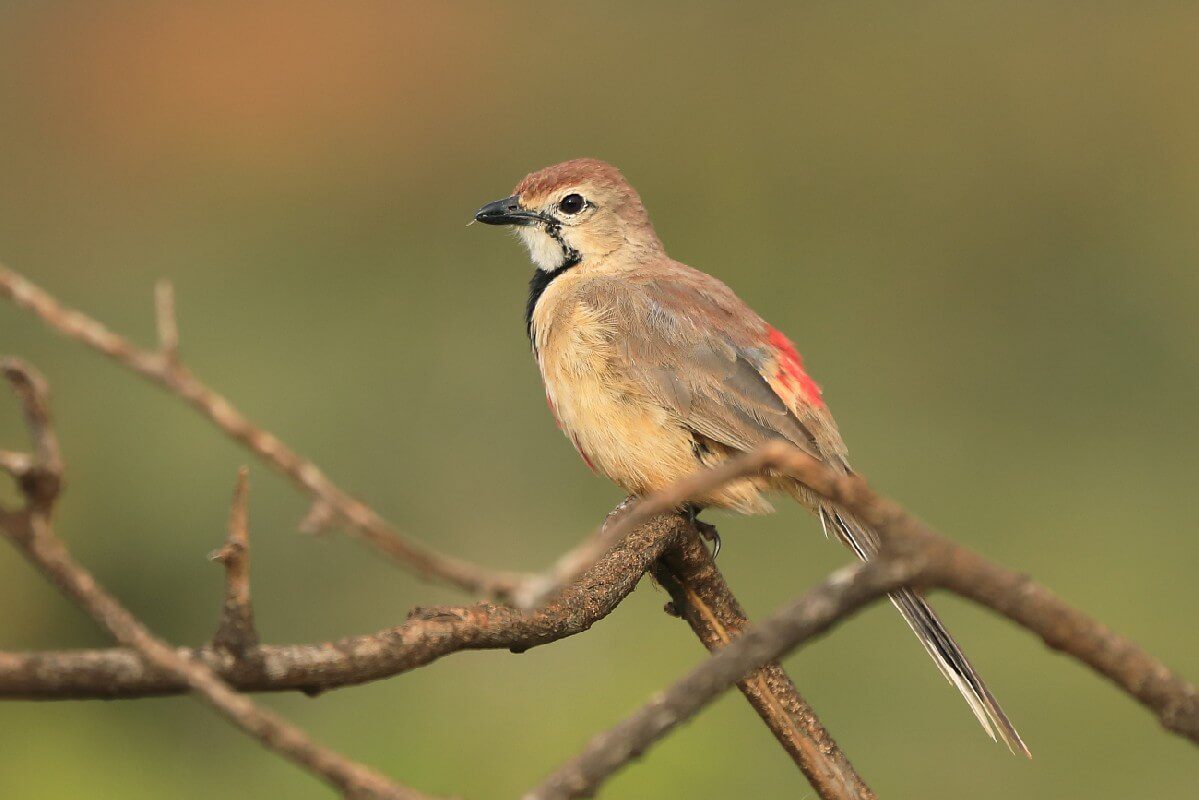
Day 1: Arrival in Tanzania
Our Tanzania birding tour will start with your arrival at Kilimanjaro International Airport. You will then be transferred to your hotel in Arusha. If time permits, we may enjoy a brief birding walk in the lodge gardens, where species such as Variable Sunbird, White-browed Robin-Chat, and African Paradise Flycatcher may be spotted.
Day 2: Lark Plains to Tarangire National Park
On this day, after having an early breakfast, we begin our birding adventure at the Lark Plains, a unique dry savannah located north of Arusha, famous for the rare Beesley’s Lark, which is endemic to this specific region.
Other highlights here include Athi Short-toed Lark, Fischer’s Sparrow-Lark, Chestnut-bellied Sandgrouse, Fischer’s Lovebird, Yellow-necked Spurfowl, Northern White-bellied Go-away-bird, and Ashy Starling.
In the afternoon, we transfer to Tarangire National Park, a beautiful park dominated by baobab trees and seasonal swamps.
Accommodation in Tarangire National Park.
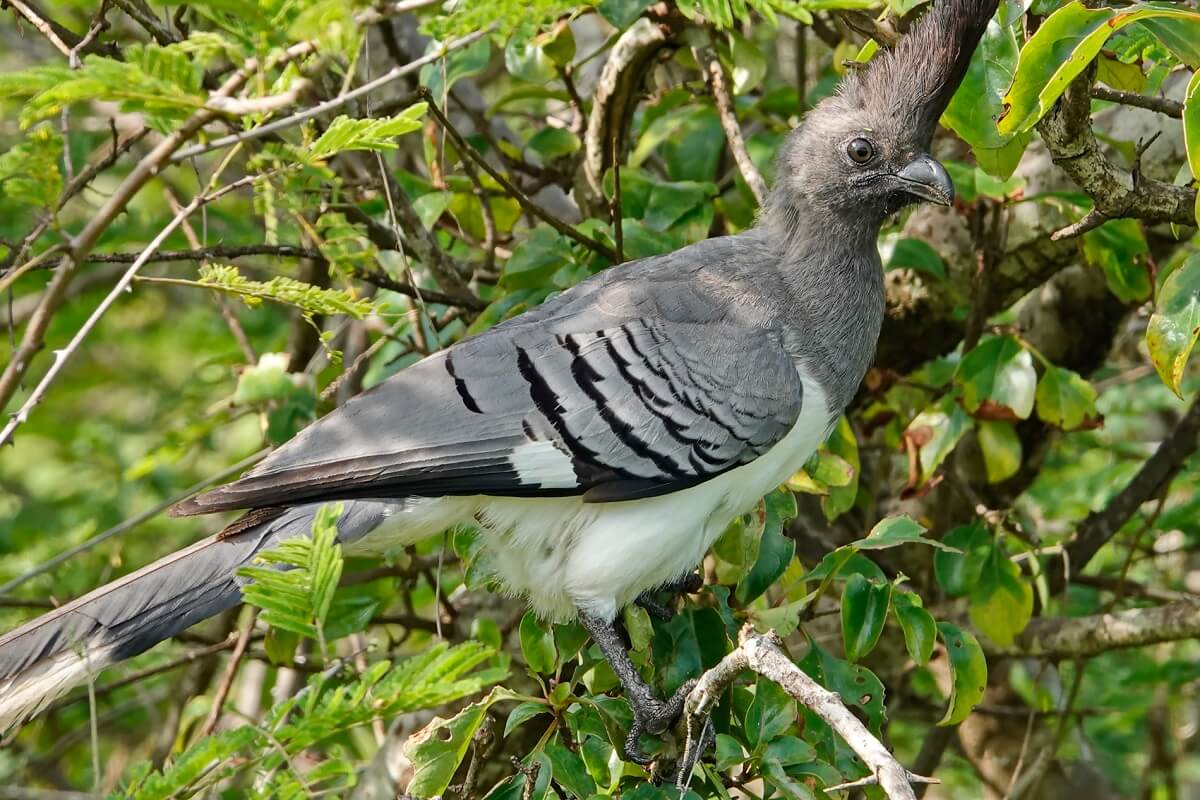
Day 3: Tarangire National Park
This full day will be dedicated to birding in this bird hotspot with loads of species to spot. With over 500 bird species recorded, we’ll look out for the Yellow-collared Lovebird, Northern Pied Babbler, African Orange-bellied Parrot, and many more.
Accommodation in Tarangire National Park.
Day 4: Lake Manyara National Park
After breakfast, we shall transfer to Lake Manyara National Park for a hotel check-in, lunch, and a birding session. The Park is famous for its groundwater forest and alkaline lake.
The Park’s diverse habitats attract over 400 bird species. We’ll seek out species like the Pel’s Fishing Owl, Crested Guinea Fowl, Silvery-cheeked Hornbill, Crowned Hornbill, Pink-backed Pelican, and Lesser Flamingo.
We shall spend the night here at Lake Manyara National Park.
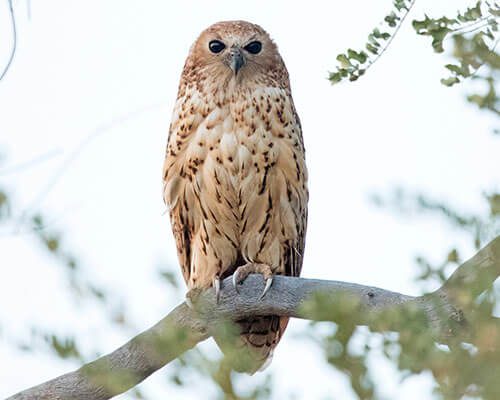
Day 5: Transfer to Ngorongoro Crater
On this day, we will start with an early morning birding session at Lake Manyara National Park in search of more bird species we may have missed the previous day. Later in the afternoon, we drive to the Ngorongoro Conservation Area, enjoying scenic views en route.
We will arrive by noon, have lunch, and enjoy an afternoon birding session within the iconic Ngorongoro Crater.
The crater’s open grasslands, swamps, and Lerai forest offer chances to spot Rufous-naped Larks, Black-winged Lapwings, Augur Buzzards, Kori Bustards, Rufous-tailed Weaver, various raptors, waterbirds, and Grey Crowned Cranes. With luck, we may also see mammal icons like lions, rhinos, and elephants.
Accommodation at Ngorongoro Crater.
Day 6: Morning Birding at Ngorongoro Crater and later transfer to Serengeti National Park.
On this day, we will start with a morning birding session at Ngorongoro Crater to score more birds we may have missed the previous day. Later, we will transfer to Serengeti National Park and spend the night there.
Day 7 & 8: Serengeti National Park via Olduvai Gorge Prehistoric Site
On these two days, we will drive through the vast plains of the Serengeti as we visit the Olduvai Gorge—an archaeological site rich in early human history. The Serengeti ecosystem, with its endless grasslands and kopjes, hosts over 500 bird species.
We’ll aim to spot Secretary Bird, Kori Bustard, Grey-breasted Spurfowl, Fischer’s Lovebird, Grey-breasted Spurfowl, Usambiro Barbet, Ostriches, and numerous raptors, plus migratory birds. In the wetland areas, we may spot Black-headed Heron, African Wattled Lapwing, and Saddle-billed Stork.
Nights will be spent here at Serengeti National Park.

Day 9: Serengeti National Park to Arusha
After a final morning birding drive in the Serengeti, we drive back to Arusha. En route, we may spot more dry-country species like White-headed Buffalo-Weaver, Eastern Chanting Goshawk, or Nubian Woodpecker.
Accommodation in Arusha.
Day 10 & 11: West Usambara Mountains
After breakfast, we will leave Arusha early and head to the cooler, forested highlands of the West Usambara Mountains. Known for their ancient Eastern Arc forests, these mountains are hotspots of endemism.
Target species include Usambara Akalat, Usambara Weaver, Mountain Buzzard, Stripe-cheeked Greenbul Usambara Ground-robin, Usambara Apalis, Eastern Double-collared Sunbird, and African Hill Babbler. Birding along forest trails and village edges can also bring surprises like African Hill Babbler and African Black Duck. We shall spend the next two days here and score as many species as we can.
2 nights’ accommodation in Lushoto.
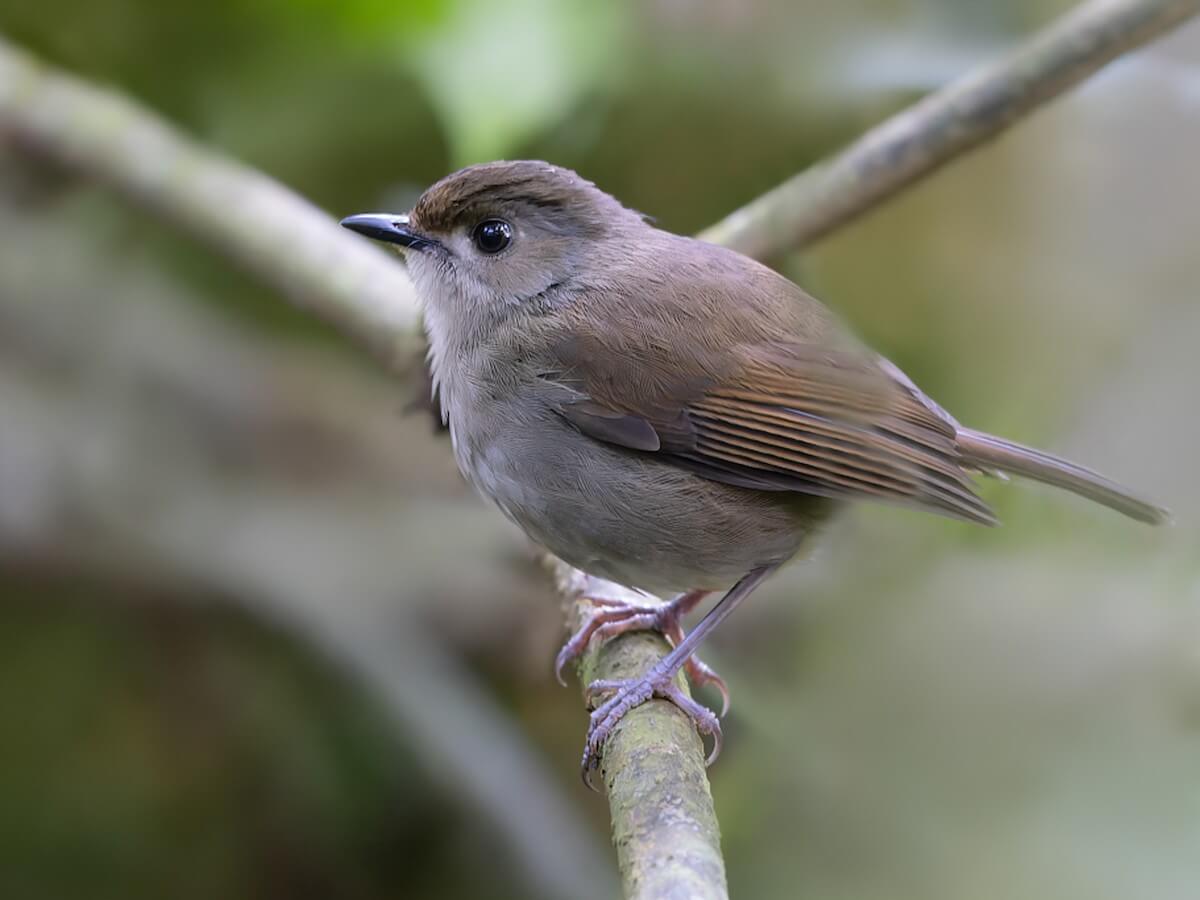
Day 12 & 13: East Usambara Mountains
These two days will start with a transfer to the Mountains. At this time, our Tanzania birding tour will be in the lush, mist-covered forests of the East Usambaras, particularly the Amani Nature Reserve. We’ll focus on regional endemics such as the Long-billed Forest Warbler, Banded Green Sunbird, and Amani Sunbird. The area supports over 330 bird species in its evergreen forest habitats. This is an excellent opportunity to observe rare and localized birds in one of the most biodiverse regions of Tanzania.
Accommodation at Amani.
Day 14 & 15: Same-Mkomazi National Park Area
The two days will start with a morning birding session at the East Usambaras forest. Later, we will move into the drier acacia-savanna and thorn scrub landscapes bordering Same Mkomazi National Park. This transition zone is home to unique species such as the Somali Golden-breasted Bunting, Hunter’s Sunbird, Rosy-patched Bushshrike, and Vulturine Guineafowl.
We shall spend the nights in Same.
The following morning, we will enjoy a full day of birding at Mkomazi National Park. With over 400 species recorded, Mkomazi offers a rich birding experience coupled with dramatic scenery. We can spot bird species like Friedmann’s Lark, Shelley’s Starling, Vulturine Guineafowl, and various dry-country specialists. Also, this remarkable Park boasts a diverse array of wildlife, including the endangered Black Rhino, the rare African Wild Dog, Common Zebras, Maasai giraffes, Savannah Elephants, Cape Elands, and Common Impalas.
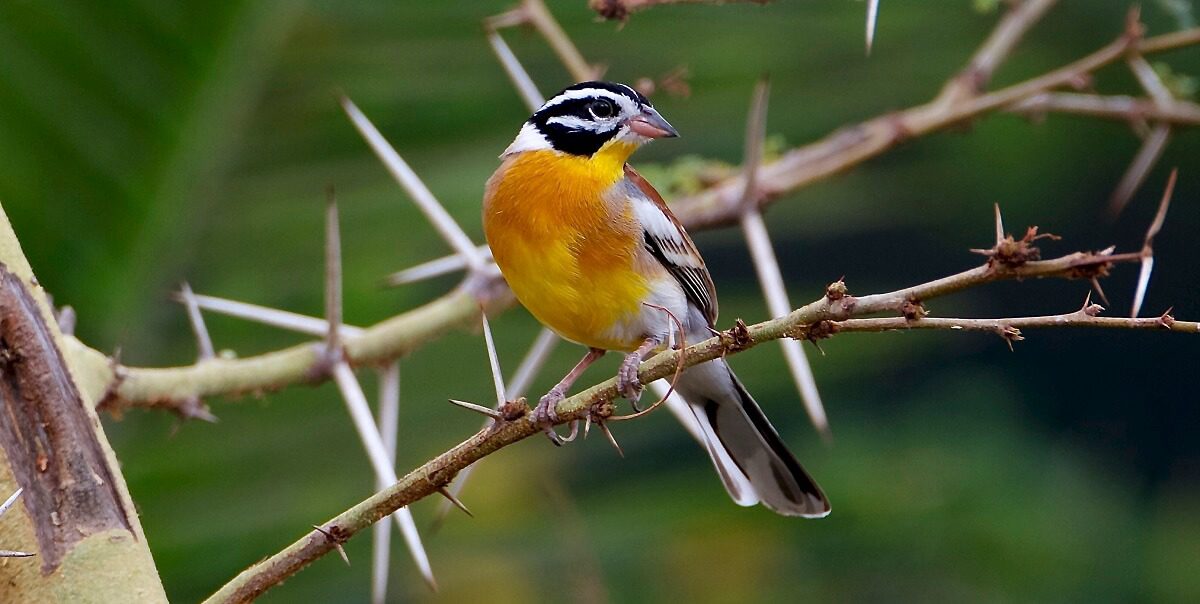
Day 16: Nyumba ya Mungu Reservoir to Arusha
On our final day, we explore the productive Nyumba ya Mungu Reservoir area. Here, wetland and open water habitats attract a wide array of waterbirds and raptors. Highlights include Pink-backed Pelican, African Fish Eagle, Goliath Heron, and Knob-billed Duck.
After lunch, we transfer back to Arusha for departure or overnight.
Other Wildlife Highlights
Our Tanzania birding tour includes a thrilling encounter with iconic African mammals such as elephants, lions, giraffes, and zebras roaming freely across the savannah. In addition to the spectacular birdlife, you may spot hippos wallowing in rivers, playful troops of baboons, and even elusive leopards lounging in acacia trees. The tour also offers opportunities to observe fascinating reptiles, colorful butterflies, and a variety of antelope species, all contributing to a rich and diverse wildlife experience.
